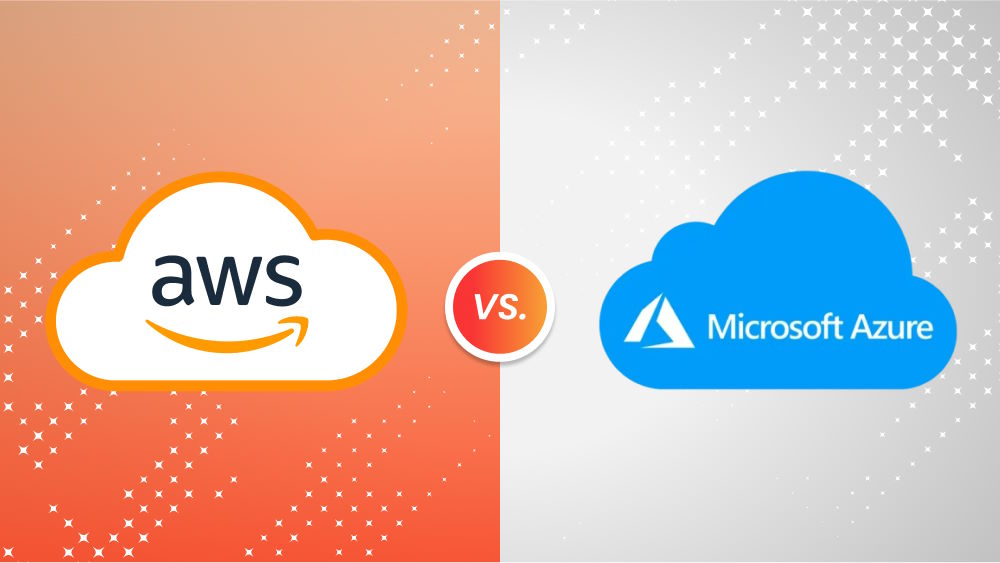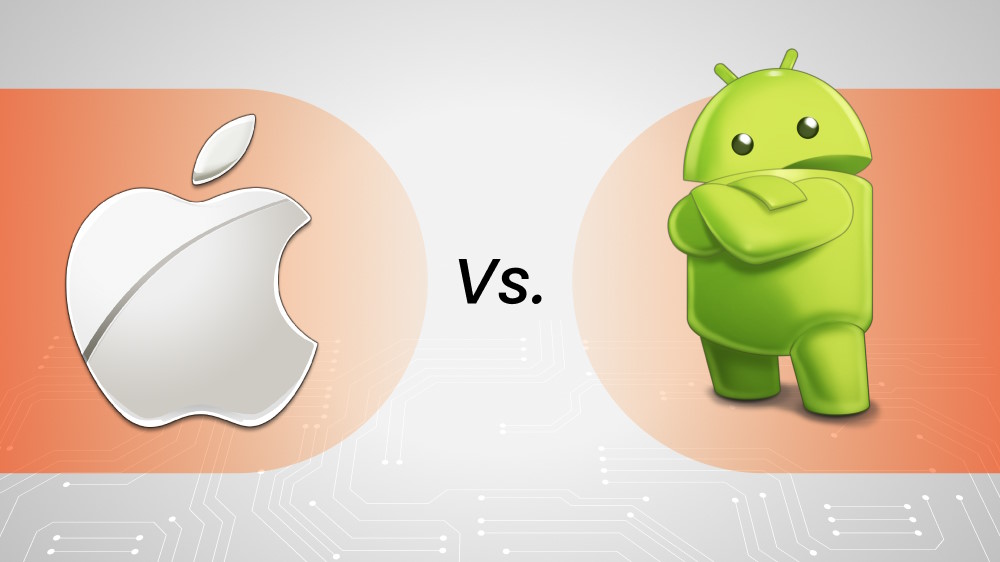Cloud-Native Benefits: How It Transforms Your Business
Learn how cloud-native technology transforms your business through better agility, scalability, cost, and innovation. This article focuses on explaining the positive changes that the transition to cloud-native brings and provides practical tips for their implementation based on the experiences of specialists and cases of successful cloud-native implementation.

Content Map
More chaptersThe new generation of IT infrastructure has revolutionized the adoption of cloud-native computing, ushering in a new era of agility, scalability, and innovation. Research from Gartner shows that by 2025, 95% of new digital workloads will be deployed on cloud-native systems compared to only 30% in the year 2021.
This remarkable shift is due to the qualities delivered by cloud-native architectures, which have set a new standard for companies in the digital age to remain relevant and resilient. In fact, implementing this approach opens a world of opportunities with real and tangible value, for example, in terms of productivity, mitigating costs, and customer satisfaction, as well as time to market.
What are the real cloud native benefits? This guide will demonstrate how cloud-native technology is revolutionizing the business landscape with its numerous advantages while also guiding you through the various challenges that contribute significantly to cloud-native risk.
What Is Cloud-Native?
Cloud native is not just a simply process about moving existing applications to the cloud infrastructure. It is a paradigm shift in the way that applications are designed, implemented, and deployed with the prime aim to adopt the flexibility and elasticity of cloud computing environments.
At its core, cloud-native embraces a set of architectural principles and technologies that enable organizations to:

- Build and deploy applications as microservices: The way of division into small services gives applications more freedom, modifiability, and speed of development.
- Utilize containers: Containers, like Docker, compile applications and their dependencies into single objects that can run in various environments. This makes them lightweight and convenient as far as deployment is concerned and easier to manage as well.
- Embrace DevOps principles: Cloud-native emphasizes close collaboration between development and operations teams, enabling faster development cycles, continuous integration, and continuous delivery (CI/CD) pipelines.
- Leverage serverless computing: This approach enables developers to create and deploy applications without having to deal with server management, freeing up resources and reducing operational overhead.
- Utilize cloud-native services: Cloud providers provide a wide range of services, including database services, storage solutions, and messaging systems, all of which are specifically developed for cloud environments and readily incorporated into applications.
By adopting these principles and technologies, organizations can reap the full benefits of cloud computing, including increased agility, improved scalability, and reduced costs.
Core Benefits of Cloud Native
The benefits of adopting a cloud-native approach are substantial.

Increased Agility and Speed to Market
Cloud-native technologies help companies minimize the development cycle, which can actually accelerate and increase the number of deployments per week. This agility is important in the present world market, as swift response to customer demand and market trends is an important determinant in the success of a firm. In contrast to the traditional cycles of development, where coding, testing, and deployment processes can take quite a long time, cloud-native development makes this a continuous cycle.
Traditionally, teams can spend months working on a product before it goes to the market. This waterfall method can lead to un-synchronizing and deceleration in response to market needs. On the other hand, cloud-native application development practices are based on CI/CD and enable developers to integrate change requests more often and release updates far more frequently. This rapid cycle of iteration not only speeds up the delivery of the market solution, but also enhances quality and reliability of the software.

There are a variety of tools and platforms that play a vital role in enabling CI/CD in a cloud-native environment. For example, Jenkins is an open-source automation server that can help to build, deploy, and automate any project. It aids teams to be able to achieve CI/CD pipeline implementations effectively since every change is tested and deployed in equal measure. Kubernetes, on the other hand, is an open-source container-orchestration tool that was aimed at providing automation of containerized applications. With Kubernetes, teams can work on vast applications and their components concurrently, making them more scalable and reliable.
Furthermore, cloud-native platforms such as Docker also provide features like containers where applications can run for different stages without being compromised by their environments. In conjunction with microservices architecture, these tools enable developers to code, compile, and execute minimally autonomous modules that, when pieced together, create an application. This modular approach also increases flexibility as each of the elements can be modified without a need to change the entire system.
Enhanced Scalability and Flexibility
Traditional on-premises infrastructures can be challenged in their ability to address varying workloads, which results in underutilization or overloading. Cloud-native applications, on the other hand, can quickly adapt to the increase or the decrease in the number of requests, guaranteeing that the applications did not over-provision or under-provision for resources. This flexibility ensures that businesses can operate at maximum efficiency during high usage yet incur minimal costs during comparatively low usage periods.
Elastic scaling is a core concept in cloud-native architectures that enables the above dynamic adjustment of resources. Unlike conventional architectures with a specific level of capacity, elastic scaling allows for adapting to actual workload requirements in real time. For example, if an e-commerce application witnesses a traffic load during holidays due to their sale, then elastic scaling makes the application scale up to meet this load. On the other hand, when traffic dies down, resources are brought down the same way so that businesses do not have to pay for unnecessary things. Not only does this create efficiency, but it also saves a lot of costs since resources are well utilized.
There are several cloud-native platforms that are designed to enable this type of scalability. AWS Elastic Beanstalk, for instance, provides an easy way of deploying and scaling web applications and services. It takes care of deployment, resource allocation, distribution of workloads, and auto-scaling, making it easy for developers to develop more applications rather than worry about physical infrastructures. In the same way, Google Kubernetes Engine (GKE) gives a fully managed environment for running, orchestrating, and scaling applications based on containers through the use of the Kubernetes platform. GKE constantly scales the instance quantities depending on the application requirement, thus making it easier to handle even when there are fluctuations in the load.
In addition, cloud-native platforms contain intrinsic technology tools for constantly monitoring resource utilization and application performance. Such an approach helps to base decisions on scalability strategies on factual daily trends, allowing businesses to fine-tune their operations still further.
Improved Cost-Efficiency
Cloud-native applications provide a considerable advantage in the aspect of cost efficiency since they eliminate a large portion of the operating expenses. On-premises IT infrastructure demands substantial capital expenditure in terms of hardware and adding to the costs of maintenance, cooling, and physical space. These costs can be significant, especially for small to medium-scale enterprises. The overheads mentioned above can completely be done away with a cloud-native approach. Following the case of software, instead of having and managing their own hardware, companies lease or subscribe to the infrastructure from the cloud service provider. The transition of cost from a capital expenditure model to an operational expenditure model enables companies to leverage other funds in the business.
The pay-as-you-go pricing models that are incorporated in every cloud provider also improve cost optimization. Unlike typical architectures where businesses have to forecast the maximum load to accommodate and procure infrastructure accordingly, cloud-native platforms enable organizations to pay only for the actual requirement. This flexibility makes the cost cut very adherent to the actual usage to avoid issues like over-provisioning. The dynamic scaling makes it possible to balance the costs together with performance and availability.
Furthermore, cloud-native platforms offer several features that drive cost optimization. For instance, serverless computing eliminates the underlying infrastructure management; developers can run their codes without having to manage servers. Cloud services, such as AWS Lambda and Azure Functions, work on configurations that permit organizations to pay only for the time their code is executing and nothing more. This model is especially useful for applications that have variable loads because, with this model, costs are greatly associated with usage.
Another important factor related to cost control in cloud-native spaces is resource utilization tracking. Tools such as Amazon CloudWatch and Google Stackdriver give real-time insights into resource consumption, application throughput, and operational status. Through constant tracking of these measures, organizations can discover idle assets and so effectively plan for better utilization of infrastructure. This approach makes it easier to avoid wasteful expenditure and ensure that all expenses have real value to the business.
Enhanced Innovation and Collaboration
Cloud-native techniques allow organizations to escape the silos between development and operations teams and achieve a better alignment of different teams to accelerate the delivery of new value propositions. Such an approach is commonly called DevOps, and it promotes the integration and delivery of new features where the teams overlap. This integrated approach of delivering innovations to the market means that this gains more ground, the competitiveness is increased, and customer satisfaction is increased.
Cloud-native architectures provide multiple tools and services that enable such accelerated innovation rates. A diverse ecosystem of pre-built services, APIs, and microservices provides an opportunity for development teams to leverage commodity capabilities instead of reimplementing them in a quite often inferior manner. Current cloud solutions like Amazon Web Services, Microsoft Azure, and Google Cloud Platform offer exciting frameworks that include artificial intelligence, machine learning, data analytics, and IoT. This portfolio of ready-to-use tools helps developers get quick access to products that let them tinker, learn, and invent at a faster pace than ever.
Further, cloud-native platforms bring in other means of collaboration, such as version control systems, code reviews, and automated testing. Even the most popular services, like GitHub and GitLab, are equipped with rich collaboration tools that allow multiple users to cooperate on code and manage contributions, track changes, and assess code quality. These tools promote ongoing improvement and development within a team because members can submit ideas, recognize problems, or even suggest change, as well as solve them together.
Improved Resilience and Disaster Recovery
Cloud-native applications are designed with resilience in mind, offering robust protection against failures and disruptions. One of the key features that contribute to this resilience is redundancy. By maintaining multiple copies of data and services across different geographical locations, cloud-native applications ensure that a single point of failure does not disrupt operations. This redundancy is complemented by replication, where data is duplicated in real time across various servers. In the event of a server failure, the replicated data ensures that there is no loss and operations can continue seamlessly.
Another subcomponent of cloud-native resiliency is automated failover. In a conventional setup, manual intervention is needed to transfer operations into the backup system in the event of a failure. This can lead to such complications and enhanced downtime. On the other hand, cloud-native applications are able to use fully automated failover, where the applications automatically switch to backup systems. Such quick response helps to avoid long downtimes and keep business running regardless of interruptions and stays.
Further, cloud providers have disaster recovery solutions that go beyond storage and add to the security measures in place. Hybrid cloud space, like AWS Disaster Recovery and Azure Site Recovery, are solutions that entail creating backups, employing user data cryptography, and enabling store options to guarantee that important user data is well-secured and can be retrieved should there be an occurrence of an incident.
Real-World Examples of Cloud Native
One highly inspiring example of cloud-native innovation is Netflix, which has discovered the advantages of using microservices. The transition from monolithic to microservices architecture enabled Netflix to unbundle some of its services so that it could independently grow and develop several features. Microservices provide working models that may be easily adapted in order to introduce new characteristics or to adjust the existing ones depending on their users’ feedback. For example, Netflix’s recommendation system to suggest content to users was built and scaled up using the microservices architecture. This approach not only improved the accuracy of recommendations but also enhanced user engagement and satisfaction.
One notable example of how cloud-native applications can aid in quick recovery from unexpected events is the case of Dropbox. The cloud storage provider experienced a significant service disruption due to a power outage at one of its data centers. However, due to its cloud-native architecture, which included data replication and automated failover mechanisms, Dropbox was able to quickly restore services with minimal data loss. This incident highlights the importance of having resilient systems in place, as it allowed Dropbox to maintain customer trust and avoid prolonged downtime.
Challenges of Cloud Native
While the benefits of cloud-native architectures are numerous, it is essential to acknowledge the potential challenges businesses may encounter during adoption.
The first priority necessary to varying degrees in all of the solutions is security. By their function, cloud-native applications are deployed in a distributed manner, which opens up more opportunities for attackers. That is why organizations need to be careful and ensure they embrace proper measures to protect their cloud-native ecosystems. This comprises ensuring a high level of authentication and authorization, using encryption techniques in the message transmission and storage of messages, and regular assessment for risks and threats a firm is exposed to.
The other problem is vendor lock-in. As organizations continue to rely on certain cloud service providers and their tools, the transition to other providers becomes cumbersome and expensive. This dependency may reduce the flexibility and negotiation capability to command over the infrastructure, resulting in increased costs. To counterbalance this threat, companies must use multiple cloud providers and open-source tools and platforms that allow the company to utilize the capabilities of various cloud providers in parallel.
Additionally, the implementation of cloud-native applications may entail specialized skills in the use of cloud-native technologies. Migrating from a traditional development and operations structure to cloud computing requires a new set of paradigms, tools, and processes with which traditional teams may not be fully acquainted. Professional training and development are the other areas to consider when developing strategies for teams that will build cloud-native applications. This is in addition to a proper understanding of containerization, microservices, CI/CD, and other aspects of cloud security. This issue can also be greatly compounded by the shortage of skilled professionals in the market, which means that talent development and management should stand out as critical organizational priorities.
How Can Orient Software Help?
Despite these challenges, the potential rewards of adopting a cloud-native approach are significant. Orient Software’s expertise can help businesses resolve the issues of cloud-nature adoption without hesitation. The services provided by Orient Software to an organization include strategy, planning, implementation, and optimization of functions that will enable organizations to reap optimum benefits from cloud-native technologies. Our mastery of cloud-native application development, security, and management makes it easy for businesses to overcome security issues, eliminate limitations arising from vendor lock-in, and ensure efficient bridging of the skills gap.







